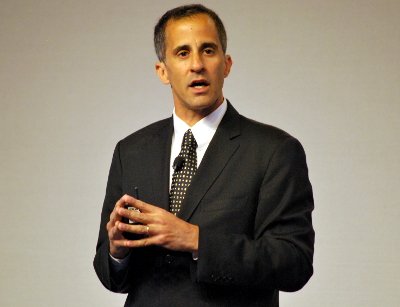Amid its mother company’s Autonomy-related scandal, multiple ongoing shareholder lawsuits, wholesale CEO-led restructuring and calls by Wall Street analysts to split the company up, HP’s Enterprise Services division is doing what it can to adjust to the hectic environment and rapid changes in the market. As HP CEO Meg Whitman is attempting to sell the company’s wide range of technology offerings (from PCs and printers to data center equipment) as one all-encompassing package, the services division and its offerings will play a key role.
The division (as is the company at large) has been in a state of turmoil for a few years now. In June 2010 – about two years after the services business ballooned, thanks to the US$13.9bn acquisition of IT outsourcing giant EDS – HP unveiled a restructuring plan for the Enterprise Services business. The plan, executed over a span of several years, included consolidation of the company’s commercial data centers, tools and applications, and cutting about 8,200 staff.
The company estimated the plan would cost about US$1bn, most of which it has already paid, expecting, however, to continue paying for it through the first half of 2015, according to HP’s recently filed 10-K form. Those 8,200 staff had been eliminated as of the end of October 2012.
In August 2012, the company announced it would write down $8bn off its value because the enterprise services business was not doing well, and fired the division’s head John Vistenin. During November and December of last year, shareholders filed seven lawsuits against the company, its former CEO Leo Apotheker, current CEO Whitman and others, accusing them of “concealing negative information regarding the financial performance” of the enterprise-services business. Many of the lawsuits combined the services-related complaint with accusations of wrongdoing in relation to the Autonomy acquisition.
In the early days of the New Year, UBS analysts suggested that the best way for HP to finally see the light was for its management to split the company in two: an enterprise business and a PC-and-printer business. Release of the note was followed by a wave of opinion articles agreeing with UBS.
Whitman, however, has no such plans. In an interview with Bloomberg Businessweek, she said the company would be better off as a whole. Her vision is to use cloud-computing software to combine PC and printer devices with HP’s data center products and sell these device-through-data-center solutions to corporations, Whitman told Businessweek.
Everything-as-a-Service
Dennis Stolkey, senior VP and general manager for the Americas at HP Enterprise Services, says as far as the services division is concerned, the core part of this integration initiative will be HP’s cloud services. The vision is to help customers get everything as a service: applications as a service, communications as a service, disaster-recovery as a service, security as a service and, of course, data center infrastructure as a service.
Integration of mobile applications with cloud environments is also going to be critical, Stolkey says. HP’s services division wants to provide the guidance and the technology to make this happen for corporate customers.
Another big piece is data analytics. HP’s core offerings here are social-network intelligence, business analytics and Autonomy. The services division will play a huge role in this part of the strategy as well. “They’re either software solutions or services solutions,” Stolkey says about the analytics offerings. “And some of the services solutions use software.”
Asked whether the ongoing scandal over Autonomy’s alleged pre-acquisition accounting abracadabra, Stolkey says the controversy will not change HP’s Autonomy product strategy. “I don’t believe the strategy will change, and I don’t believe it’s impacting sales,” he says about the scandal. “The controversy isn’t about the quality of the product.”
The third big piece of the services-division’s future is security. HP wants to help corporate customers modernize legacy applications to withstand modern security threats. “Apps designed in 80s and 90s did not consider today’s security threats,” Stolkey says. “We have a number of things that can help clients.”
An example is application-security testing as a service. It identifies and closes security vulnerabilities in the client’s application layer, he explains.
And last but not least, Enterprise Services is going to continue emphasizing its infrastructure optimization offerings, helping CIOs do more, while the size of their IT budgets stays the same.

